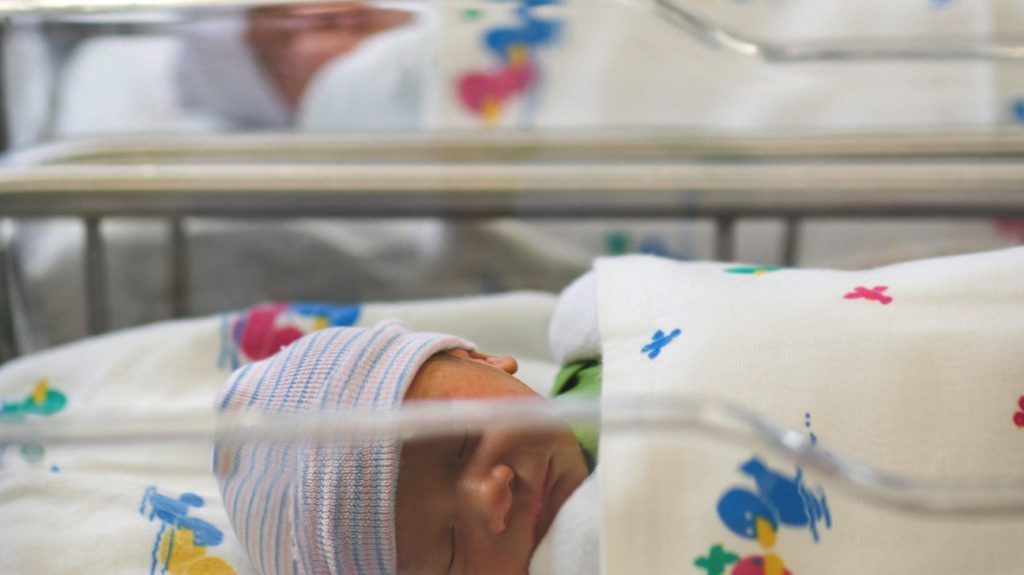Source: WSJ.com
The number of babies born in the U.S. last year fell to a 32-year low, deepening a fertility slump that is reshaping America’s future workforce.
About 3.79 million babies were born in the U.S. in 2018, according to provisional data from the Centers for Disease Control and Prevention’s National Center for Health Statistics. That was a 2% decline from the previous year and marked the fourth year in a row that the number fell. The general fertility rate—the number of births per 1,000 women ages 15 to 44—fell to 59.0, the lowest since the start of federal record-keeping.
With the latest decline, births in the U.S. have fallen in 10 of the last 11 years since peaking in 2007, just before the recession. Many demographers believed that births would rebound as the economy recovered, but that trend hasn’t materialized.
Baby Bust
Births in the U.S. have fallen in 10 of the last 11 years, after peaking in 2007, just before the recession.
Instead, experts say the continuing declines appear to be rooted in several trends, including teenagers and unmarried women having fewer babies, lower Hispanic fertility rates and the rise in women obtaining college degrees.
The decline has important implications for the U.S. economy and workforce. The total fertility rate—an estimate of the number of babies a woman would have over her lifetime—has generally remained below the “replacement” level of 2.1 since 1971. A fertility rate falling farther below replacement level means that, without enough immigrants, the U.S. could see population declines and a workforce too small to support a growing segment of retirees.
Last year, it fell to 1.7, a record low. That figure remains higher than the rate in parts of Asia and Europe. The total fertility rate in Japan is about 1.4; in Germany it is 1.6; and in Italy it is 1.3, according to estimates from the World Bank.
Birth Rates by Age
Younger and unmarried women have seen the largest fertility declines in recent years, while rates for those in their 30s or who are married have generally increased. The drop has been particularly dramatic among teens ages 15-19, where the birthrate fell 7% last year to 17.4 births per thousand women. That figure is down 72% from a peak of 61.8 in 1991.
In 2018, only women ages 35 to 44 saw an increase in birthrates, while rates for all other age groups declined or remained the same.
“We see these continuing trends: births to older moms increasing, births to younger moms going down,” said Brady Hamilton, a statistician/demographer with NCHS who co-wrote the report.
The trends suggest that a decline in unplanned pregnancies is a big part of America’s lower fertility. Research led by Kasey Buckles, an associate professor of economics at the University of Notre Dame, found that about 35% of the fertility decline from 2007 to 2016 is because of declines in pregnancies that were likely unintended.
“It’s really remarkable, not something that we’ve seen over the last century,” Prof. Buckles said of the changing fertility patterns.
Some of that comes from the fact that women are simply waiting longer to have children. Demographers hope that as the large millennial cohort, which this year will be between age 23 and 38, moves through their 30s, the birthrate will begin rising again.
But they also caution that when women delay babies, they end up having fewer of them, either because their ability to conceive declines with age or because other factors—a failed marriage or a financial setback—interfere with those plans.
“There’s a limit to how much you can delay and still catch up,” Prof. Buckles said. “There’s no way we would get complete catch-up for that reason.”
Another factor is that Hispanic women are having fewer children. Last year the number of births to Hispanic women fell 1% to total about 886,000. That is partly because the recession and subsequent tightening of immigration rules have slowed the flow of Hispanics into the country. It is also because the share of America’s Latino population that was born in the U.S. has grown—about two-thirds of U.S. Hispanics were born here, according to the Pew Research Center.
American-born Hispanics have lower fertility rates than those born in Latin America because they are more likely to assimilate to broader U.S. norms, including wanting smaller families. Research led by Alicia H. Munnell at Boston College found that if immigration doesn’t rebound, the decline in Hispanic fertility could persist.
Contraceptive Use
The expanded use of long-acting contraceptives is another force driving down births. The 2010 Affordable Care Act, which extended health insurance to millions of Americans and mandated contraception coverage in plans, is one factor behind that uptick. Data from the CDC’s National Survey of Family Growth shows 8.6% of women using intrauterine devices in its 2015-17 survey, up from 1.3% in 2002.
Abortion doesn’t appear to be responsible for the birth decline. The Guttmacher Institute found that both the total number and the overall rate of abortions have fallen to their lowest levels since around the time that Roe v. Wade legalized the procedure in 1973. Guttmacher advocates for reproductive rights but its figures are considered reliable by abortion opponents and supporters alike.
Read the full article here: https://www.wsj.com/articles/u-s-births-fall-to-lowest-rates-since-1980s-11557892860


